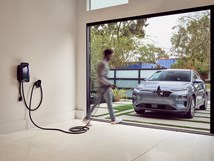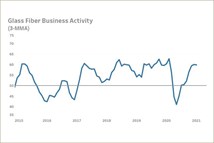Honda Touts Fluoride-Ion Battery
Honda Motor Co. is developing a fluoride-based battery chemistry that promises 10 times the energy density of current lithium-ion units.
Honda Motor Co. is developing a fluoride-based battery chemistry that promises 10 times the energy density of current lithium-ion units.
Scientists from the carmaker’s Honda Research Institute are collaborating on the program with researchers from the California Institute of Technology and NASA's Jet Propulsion Laboratory. The team published a paper on fluoride-ion batteries (FIBs) in the journal Science.
The greater energy density, which is attributed to the low atomic weight of fluorine, could significantly improve efficiency by reducing recharging time and boosting driving range, while lowering costs and improving safety, according to the researchers. Honda says fluoride-ion batteries also are less prone to overheating than are lithium-ion units. They also would have less environmental impact than the mining of lithium and cobalt used in current electric vehicle batteries.
In the past, solid-state fluoride ion-conducting batteries were limited to high-temperature (above 150°C) conditions necessary to make the electrolyte fluoride-conducting. The Honda team says it has developed a new chemistry that enables operation at room temperatures.
The scientists attribute the breakthrough to a chemically stable liquid fluoride-conducting electrolyte with high ionic conductivity and a wide operating voltage. The electrolyte is paired with a composite cathode that features a copper-lanthanum-fluorine nanostructure to enable reversible electrochemical cycling at room temperature, according to the paper.
Several other groups are developing similar chemistries. A group of German researchers published a study on room-temperature fluoride-ion batteries earlier this year in Applied Energy Materials.
RELATED CONTENT
-
On Automotive: An All Electric Edition
A look at electric vehicle-related developments, from new products to recycling old batteries.
-
When Automated Production Turning is the Low-Cost Option
For the right parts, or families of parts, an automated CNC turning cell is simply the least expensive way to produce high-quality parts. Here’s why.
-
The Koenigsegg Jesko Has An Amazing Engine
It is hard to believe that this is a vehicle in “serial” production with such extraordinary powertrain performance








